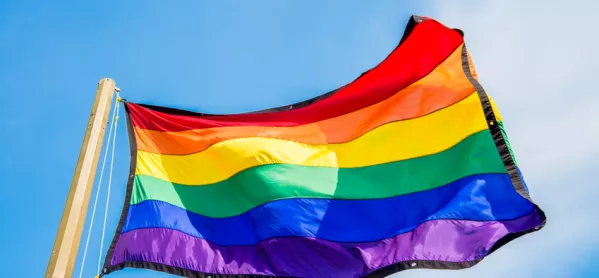- Home
- Show your Pride in the classroom
Show your Pride in the classroom

This Saturday, 8 July, the annual Pride parade will take London by colourful storm. Celebrating Pride is a way to focus on love, acceptance and inclusion. And it is not just a London event; it takes place all over the country at different times of the year. You can find out when your local Pride takes place through the Stonewall website.
So why does Pride belong in our classrooms, and what can we do with it there?
1. Inclusion
The term “inclusion” has been traditionally used in education to refer to respecting the rights of students with SEND, but we need to think about inclusion in terms of stamping out discrimination of any kind. All over the world, LGBT people are literally dying for their rights; make your classroom and your school a place where they don’t have to fight for them.
In the classroom:
- Make an explicit rule that LGBT discrimination and homophobic language are not acceptable.
- Have a homophobic, biphobic and transphobic bullying policy that applies to both students and staff.
- Don’t be heteronormative about relationships. For example, don’t use “is he your boyfriend?” as the go-to phrase; it’s reductive and assumptionist.
- Ensure you are open to the idea that pupils, parents and staff may well have same-sex partners, be trans, or have other identities you might not expect. Never assume.
- Talk about “gender” (the way you identify) as something different to “sex” (your anatomy) and be clear that neither defines you nor who you are attracted to. Use the opportunity to explore and explode stereotypes whenever they come up.
During Pride week:
- Educate yourself and your pupils: talk about gender stereotypes using these resources from the NUT teaching union, or these excellent ones from Schools Out UK.
- Make a promise to yourself that you will never unnecessarily (and it’s almost always unnecessary) group your pupils by their (perceived) gender again.
2. Representation
Our identity is powerfully shaped by who we see in different roles and whether we can identify with them. LGBT people have long been all but invisible in popular culture. A small yet significant proportion of your pupils will be struggling with LGBTQIA issues; to them, the world might seem to be pretending that they don’t exist.
In the classroom:
- Display posters and photos of people who do not appear to fit gender norms. Talk to pupils about why we feel the need to label people as a certain gender and the underlying assumptions.
- Become familiar with the term “cisgender” (denoting or relating to a person whose sense of personal identity and gender corresponds with their birth sex) and talk to pupils about it whenever it comes up.
During Pride week:
- Find some examples of LGBT characters in video games, movies or pop culture that you can display around the school.
- If you feel able, share yours or another staff member’s story with pupils that touches on LGBTQIA issues, in an age-appropriate way (kids are astonishingly good at understanding and accepting these issues, actually). Here’s an example.
- Give an assembly on some influential LGBT figures in history (the most jaw-dropping, in my experience, is Alan Turing).
3. Awareness
Often, I find that teachers are not aware of the scale of the issues that LGBT people may face, and just how many people are affected. They only become aware when something significant happens, like a pupil asking them for advice or coming out to them - and then they may not know what to do. Educate yourself ahead of time.
In the classroom:
- Think carefully about the language you use, and learn the newest words in common usage (you can always ask your pupils to help keep you up to date).
- Discuss news stories and current affairs around LGBT rights.
- Do not expect a member of staff who is “out” as LGBT to deal with pupil issues on their own. Build a community of well-informed teachers who all can help and support, and do not lump LGBTQIA issues all in the same bucket. I have heard countless stories of bewildered gay and lesbian teachers being given trans pupils to “sort out”.
During Pride week:
- If you know anyone that is LGBT, respectfully ask them about their school experiences.
- Have a look at Stonewall UK, which has made a huge suite of excellent education resources in this area.
- Most importantly; however you decide to do it, acknowledge Pride and the many organisations that have fought tooth and nail for the rights of LGBT people in some way - fly the flag, hold an assembly, hang posters, have a cake sale, dress up. Pride is such a joyful occasion - harness that vision of love and acceptance as something your school and classroom is totally on board with. It’s is a wonderful opportunity to explore the way our identities intersect and how we shouldn’t let just one facet of that identity define others for us, whether it’s religion, race, sexual orientation or gender.
Lucy Rycroft-Smith is a teacher and writer. She tweets at @honeypisquared
Want to keep up with the latest education news and opinion? Follow Tes on Twitter and like Tes on Facebook
Keep reading for just £1 per month
You've reached your limit of free articles this month. Subscribe for £1 per month for three months and get:
- Unlimited access to all Tes magazine content
- Exclusive subscriber-only stories
- Award-winning email newsletters



